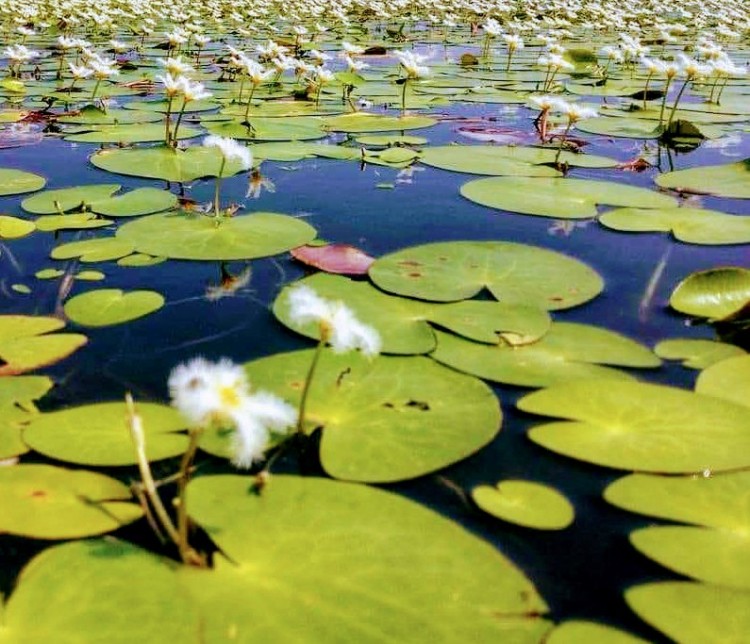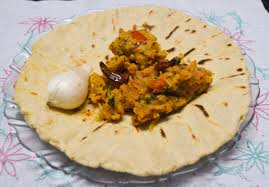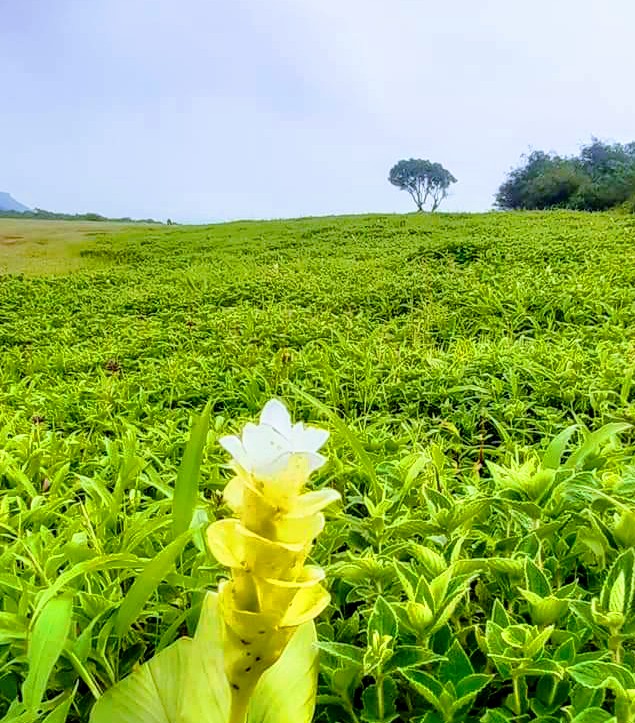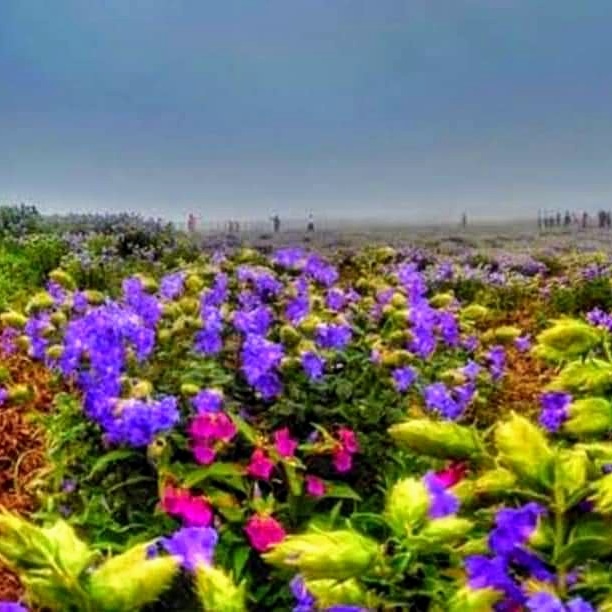
A flower’s appeal is in its contradictions — so delicate in form yet strong in fragrance, so small in size yet big in beauty, so short in life yet long on effect. – Terri Guillemets
Are you surprised after reading the title?? Need not. All those nature lovers, ardent flora researchers and photographers who are in search of vast fields of colourful mass blooming flowers but can’t opt for a foreign trip to Amsterdam in order to witness tulips in the world famous Keukenhof Gardens or not interested for a strenuous trek to Valley of flowers in Uttarakhand can surely visit the visually enticing Kaas Plateau in Maharashtra itself.But make sure you visit the plateau in months of August and September with prior permission. It is the perfect time and the picture perfect place to click pics in niche poses like King Khan Shahrukh Khan in DDLJ, detox your mind as if in a spa, rejuvenate amidst nature and spend some time in ultimate tranquility without much expenditure.

Kaas Plateau – The name ‘Kaas’ originates from the Kaasa tree, a genus of tropical and subtropical trees and the leaves of the tree turn red from green as it matures. During the month of March the tree sprouts white flowers. Kaas Plateau in Satara district of Maharashtra at an altitude of 1200 meters is locally known as Valley of flowers owing to its seasonal blooming of wild flowers during the months of August and September. It is also known as “Kaas Pathar” in regional language (marathi).Even the route from Satara to Kaas is a scenic route with mountains and valleys basking in the glory of colourful flowers. The climate on the plateau is absolutely pleasant and dramatic.The open fields of Kaas Plateau seem to resemble a carpet of million tiny flowers of majestically bold colours like pink,red, blue and green. Basically, it is a plateau formed from volcanic eruption in the western ghats and is made of basalt rock covered with a layer of one inch soil. Because of this, the 850 species of flora including orchids and carnivorous plants are restricted to this area only.Orchids are known to bloom only for 3-4 weeks. As per statistics, almost 70% of the flowers of Maharashtra are found only here.

Post Monsoon, the plateau is transformed into a kaleidoscopic maze accentuated with endemic flowers like Kaasa, anjani, paner, sonki and anjani with numerous butterflies hovering over the vast fields.The sight of the seamless sky in hues of white and blue with the flowers in hues of overpowering pink and violet make it a sight to behold forever in our hearts. Not all flowers bloom at the same time. The unique part of the flora in this area is most of these flowers are tiny and some may not be visible unless you observe closely. One can find a long detailed list of botanical names of the flora found on the plateau on wikipedia site. If you are a botanical enthusiast , then the guides available at the main entry gate can help you recognize the plants with their botanical names and common names as well.


Amazingly, the colour of the plateau keeps on changing every week with the blooming of the different shaded flowers. Utricularia pupuriensis and Pogostemon deccanensis paint the plateau in blue, Impatiens oppositifolia make it pink whereas Smithia hirsuta and Senecio bombayensis attribute the yellow colour to the plateau. So it totally depends on your luck to witness the coloureed plateau with different flora species based on their seasonal blooming.

Fauna on the Plateau – The plateau also has faunal diversity with easy spotting of tiger beetles, praying mantis, lichens,spiders, 200 species of birds, rusty cat, deer, hares, civets and gaur with rare sighting of leopard. Kaas lake (Kumudini lake) is on the south of the Kaas Plateau and is surrounded by dense forest. It lies between sajjangad fort and kanher dam. The lotus filled pond habitats tadpoles, fairy shrimps, coral snake, etc.

Food on the plateau – Kumudini or Kaas lake is the perfect picnic spot with a mat spread to relax and have homemade food, chai or cold drinks. There are some restaurants besides the lake offering local delicacy Zunka bhakar, indian burger, maggi, etc. One can find localites selling cucumber slices, roasted peanuts, buttermilk, etc. For fine dining experiences with stunning backdrops of valleys and mountains, opt for lunch at the restaurants on the Satara – Kaas route.

Cause of Concern – Truly the concern about this amazing plateau is that the biodiversity of the region is extremely fragile.The plateau experiences a natural cycle of extreme conditions, with wet water-logged cool monsoons, very dry hot summer (45 °C) and dry winter (5 °C). The soil is acidic with a thin layer on top of laterite rock underneath. Extreme seasonality influences the ecology of the site. Moereover, although Kaas plateau has been accredited and given the status of UNSECO Natural World Heritage Site since 2012, it is still not much popular among the tourists all over the globe.
Other Major Attractions Near Kaas Plateau
Shri kshetra yewateshwara – This place is 4- 5 km away from Satara City and at 2000 feet height from sea level. This is a Hemadpanthi temple built 1000 years ago and is dedicated to Lord Shiva.
Vajrai waterfall – Located at 6km from the plateau and is accessible by a mud road from the Kaas village and a following trail till the end of the road. Best for scenic valley views and three step waterfall . One can find leeches all around. Perennial waterfall only to be viewed as swimming is strictly prohibited. Some caves are near the falls.
Thoseghar waterfalls– Thoseghar Waterfalls, located around 20 km from Satara and 35 km from Kaas Plateau, marks the origin of the Tarali River. The waterfall drops through a series of cascades with a total height of about 500 m. This is a seasonal waterfall plunging into a deep gorge. The falls are accessible to tourists. Must visit tourist spot in Satara.
Bamnoli boat club – Bamnoli village is 12 km away from Kaas plateau. It is based on east bank on “Shivsagar “ lake. This is backwater of Koyana Dam. Boat club and water sports facility is available for tourists where one can choose to take a boat ride of the Lake, a boat trip to the beautiful Tapola ( Mini Kashmir) or a boat ride to the Nageshwar Shiv temple. This is the entry point to visit Vasota Fort.
Vasota fort – This fort is situated in the basin of Koyana. The height is 1100 to 1153 feets from sea level. Koyana’s sub-rivver imerges from Vasota fort. This fort is also known as Vvyaghragad. Permisson from Forest Department, is required to visit this fort.
Sajjangarh Fort – Located 16 km from satara,Sajjangad is a protected monument as it is an ancient hill fort and a pilgrimage place. Earlier known as parali fort or aaswalyagad was renamed as Sajjangad under the rule of Chhatrapati Shivaji Maharaj. It is the final resting place of Swami Ramdas, spiritual guru of Chhatrapati Shivaji Maharaj. One has to climb 300 steps to reach the fort.
How to Reach. By air – Pune or Mumbai airport. By road – 136 km from pune and 278 km from mumbai. 2-3 hrs drive from pune and 5-6 hrs from mumbai By train – Satara railway station is nearest
Tips for travelling
- Check with the official website before planning a trip to the plateau for permission, regular updates regarding blooming of flowers and entry instructions.
- Those who are in search of unique flora of different shapes, colours and sizes can visit the plateau in the month of July or august.
- Tourists who wanna click astonishing pics with colourful blooming fields in the backdrop can visit in the month of September when the whole plateau is painted in colours of rainbow.
- Do remember the flowers grow at a very low height and do not expect fields with plants of your size.
- Book online in advance for permission as only 3000 tourists are allowed per day to keep a check on damage of the biodiversity of the plateau.For Rs100, you can spend three hours on the plateau. Time slots: 7am-10am; 10am-1pm; 1pm-4pm; 4pm-7pm.
- Buses are also available from Satara bus depot which can take you to the plateau and drop you exactly at the spot.
- If you take your personal vehicle, you have to walk atleast 2 km from the car parking area to reach the exact spot.
- No washrooms or eateries are available in the restricted area of Kaas plateau. You can access portable washrooms at the main entry gate.
- Restaurants are available near the lake area or en route from Satara to Kaas.
- Guide service is available.
- This trip hardly consumes 3 hours and you can therefore visit to the other tourist spots in the vicinity as well.
- Limit your timing on the plateau, so as to avoid over crowding.
- Do not kill any animal of the plateau including snakes and scorpions. Just take care from and of them.
- Avoid plucking of flowers, walking on flower beds
- If possible try to be a responsible tourist in order to conserve the biodiversity and avoid smoking, alcohol consumption, eating and microphotography in Kaas Plateau.






“Flowers have spoken to me more than I can tell in written words. They are the hieroglyphics of angels, loved by all men for the beauty of their character, though few can decipher even fragments of their meaning.” – Lydia M. Child
(Special thanks to Ms.Prajakta Kanade for sharing her best clicks of the valley of flowers)
Vry nice place. I had gone there. Its like heaven on earth.
LikeLiked by 1 person
Dats great…. U can always share your inputs regarding this place…. It will be helpful
LikeLike
Vry nice place. I had gone there. Its like heaven on earth.
LikeLike
After reading this, now very eager to visit. Thanks for highlighting all the vital points. Brilliant writing……
LikeLiked by 1 person
Thanks for appreciation… Great to know that my blog made u curious about this place
LikeLike
Super Tai, you have given us information about amazing natural gift.
LikeLiked by 1 person
I am thankful to u for ur genuine appreciation…..
LikeLike
I have heard about the place but never been there. It’s on my list now 😊
LikeLiked by 1 person
Oh.. Thanks for reading…. And I am glad that my blog is convincing enough to add the place to your list…..
LikeLiked by 1 person